Consider the following buck converter circuit:
When Q1 is on and Q2 is off, current flows through the inductor and into the capacitor and the load, and the energy stored in the inductor increases. When the switches change states, the inductor and the capacitor use their stored energy to supply the load; Q2 is on and completes the current loop.
Now, if we connect the supply to the "output" side and the load to the "input" and reverse the order of the two steps, we see that the inductor charges up when Q2 is on, then discharges into the load when Q1 is on. This is equivalent to a boost converter circuit.
My question is: If we connect two devices (two batteries, a battery and a motor/generator, etc.) to each side of the converter, are we able to change the direction of current flow?
